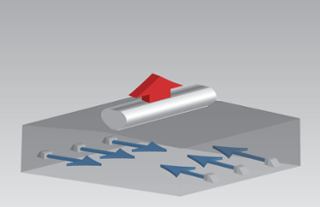Putting Pressure on Your Ventilation Systems
Choosing ventilation systems for a plant or factory can be a tough decision. When designing a new building, or repurposing an old one, you must consider the structures ventilation needs. The ventilation system will have a major impact on the interior temperature, humidity, and air flow. Not to mention the noise level, airborne dust, and many other elements as well. Proper ventilation can also help maintain the structural integrity of the building itself by reducing the damage caused by corrosion or rust.
Finding the Right Ventilation System for Your Building.

The way a ventilation system controls the aforementioned factors such as heat, and humidity can vary depending on the system type. Many ventilation systems operate by affecting the pressure inside the building to create airflow. Different ventilation systems have different configurations, which in turn can have quite different effects on the building’s overall ventilation.
Negative Pressure – Powered Exhaust Systems
A negative pressure system creates negative air pressure inside of the building. When exhaust fans are used to suck the air out of the building, it creates a negative pressure system. Due to the negative pressure, fresh air is continually drawn into the building through wall vents known as louvers. This constant movement of air is good for ventilation, but a negative pressure system might not be good in every type of facilities. Some facilities need to capture particulate or fumes, so having those constantly streaming outward would be detrimental.
Additionally, a power ventilation system is very difficult to establish or maintain in very large facilities with high ceilings. In these big buildings it is hard for ceiling fans, which are far away from the factory floor, to effectively capture enough air. In these instances, a negative pressure system might be inadvisable.
Positive Pressure – Pressure Gravity Systems
Positive pressure systems work in the exact opposite way; Fans blow fresh air into the building, while the hot interior air exhausts from the building via roof vents. Fresh air replenishes the space at the floor level. This ventilation system has the added effect of creating a “breeze” that provides an evaporative cooling effect as it flows along the workers’ skin.
Again, some facilities may be sensitive to a positive pressure system. In those situations, you might be losing the treated air, heated or cooled, that you are trying to maintain. This would not be the ideal configuration if you’re trying to hold onto process heat in the winter.
Neutral Pressure – Natural Ventilation Systems
Neutral pressure systems aim for homeostasis in the building. They utilize fans to work in one of two ways. The first includes using fans on the roof and lower on the side wall to blow air both into and out of the building simultaneously. This ensures an adjustable, steady stream of air.
The second method utilizes gravity ventilation to allow for the natural flow of air to ventilate a building. Natural ventilation helps maintain neutral pressure while ventilating the building as it is self-adjusting. This involves balancing the air entering and leaving the building; creating a system that uses neither positive nor negative pressure to move the air.
Ventilation Systems Pressure
The level of pressure within in the building controls how the air flows through it. This includes the amount of fresh air that is drawn, as well as the amount of hot, dirty air that is exhausted. By controlling the air pressure within a building, the fresh air can be directed to enter at the rate and direction required to achieve optimal airflow in the building.
The fresh air may not mix adequately if the calculations for the proper pressure levels are incorrect. When air does not mix, this leads to poor air flow. This can result in a stratification of air inside the building. Stagnant air, whether it is hot or cold, will have a negative impact on any ventilation system.
Call a Moffitt representative today to learn more about how air pressure can affect a ventilation system, and to compare potential ventilation systems for your building.
